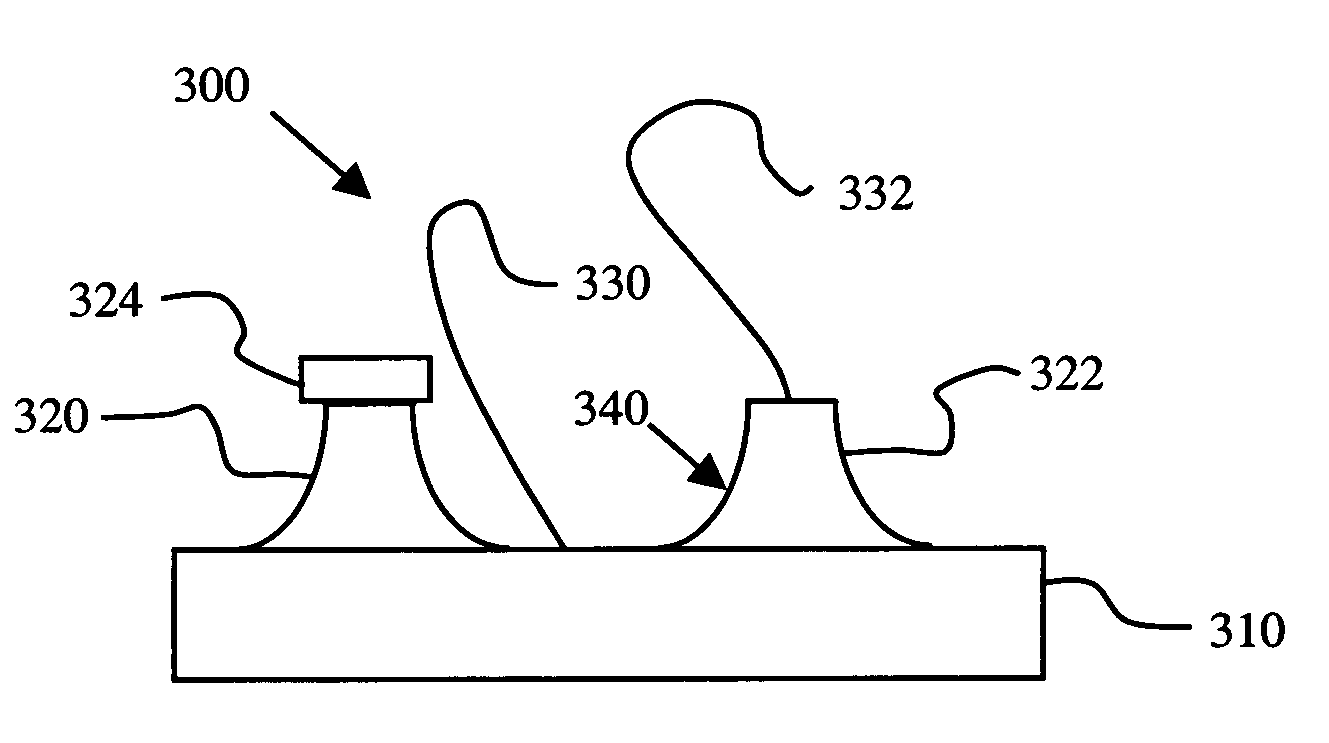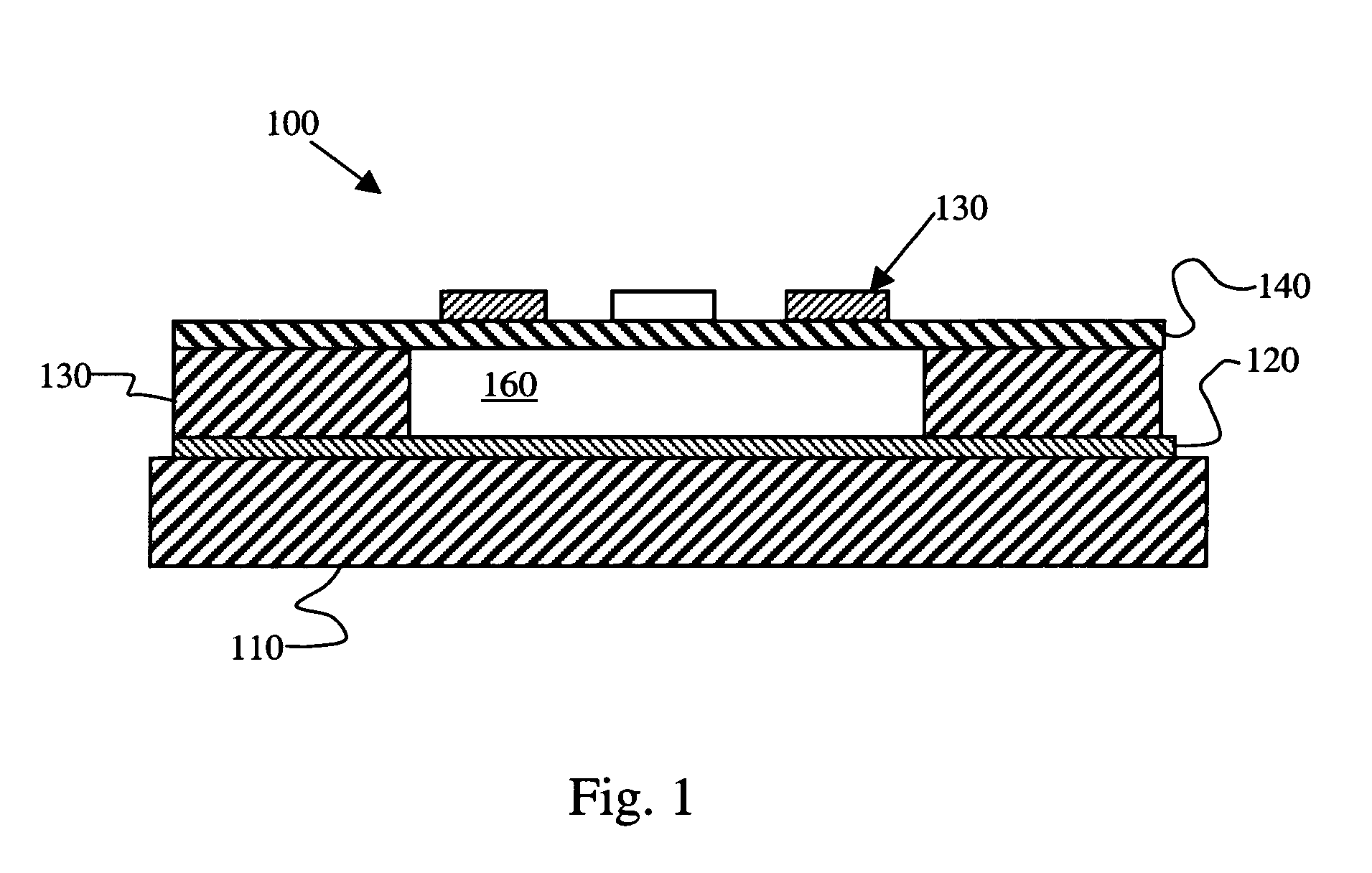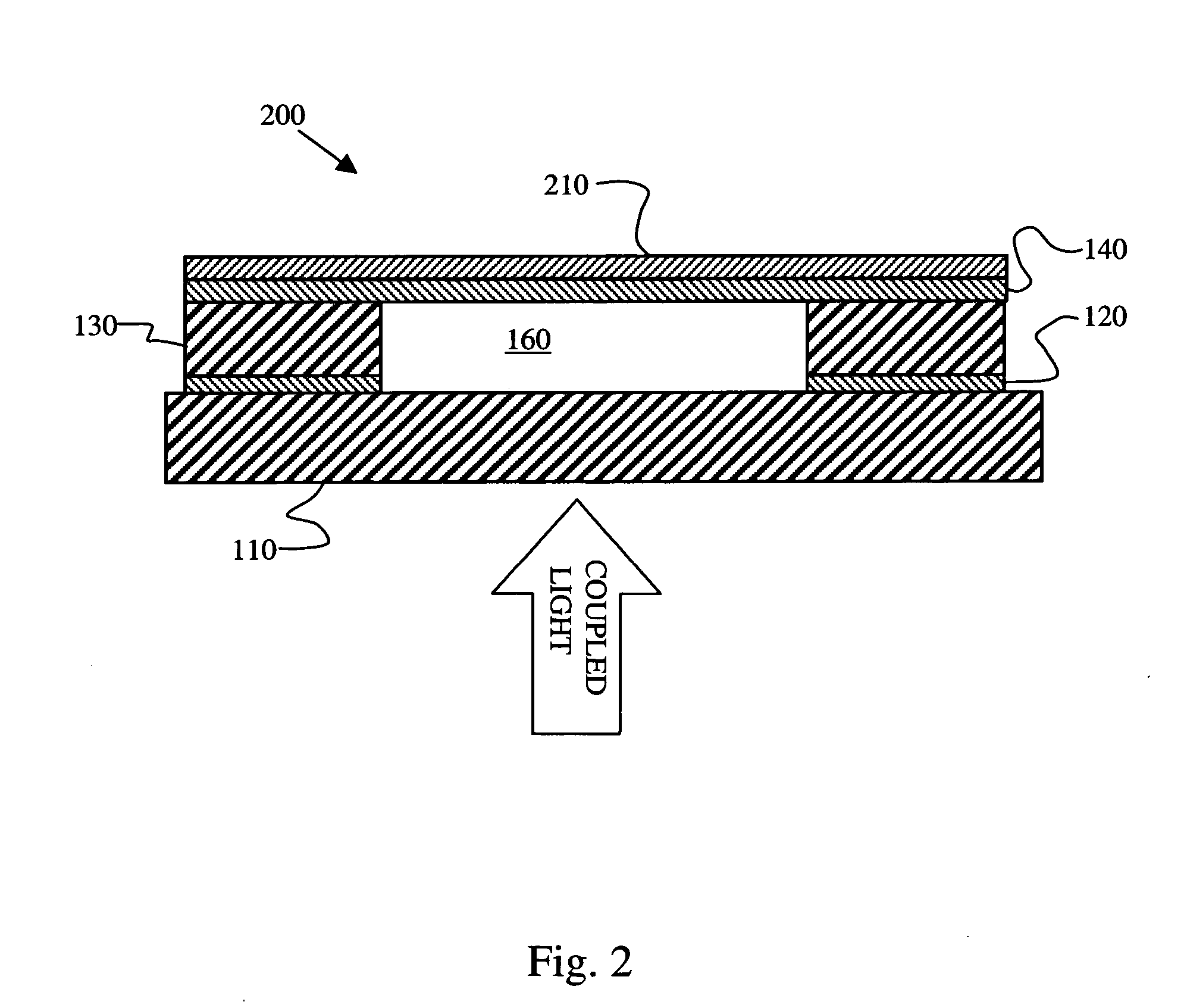Etchant, method of etching, laminate formed thereby, and device
a technology of etching and laminate, applied in the field of etching, can solve the problems of differences in the resulting freestanding or etched laminate, damage to the semiconductor layer, and undesirable removal process
- Summary
- Abstract
- Description
- Claims
- Application Information
AI Technical Summary
Benefits of technology
Problems solved by technology
Method used
Image
Examples
example 1
Selective Removal of Aluminum Oxide (Sapphire) Substrate from Gallium Nitride Layer
[0066] Sample 1 is prepared by obtaining a single crystal sapphire substrate and forming a gallium nitride epitaxial layer on the sapphire substrate using a Hydride Vapor Phase Epitaxy (HVPE) process. Sample 1 is a multi-layer laminate having a sapphire layer and a gallium nitride layer. The sapphire layer is about 300 micrometers thick, and the gallium nitride layer is about 300 micrometers thick. Each of the layers is less than 20 millimeters wide and the layers are coextensive with each other.
[0067] Sample 1 is placed in a graphite boat with an etchant. The etchant includes a mixture of salts. Particularly, the salt mixture includes sodium cryolite (Na3AlF6); lithium cryolite (Li3AlF6); potassium cryolite (K3AlF6); lithium, sodium, and potassium aluminum fluorides; alkali gallium fluorides; alkali halides (NaCl, KCl, NaF, KF, and LiF); and sodium hydroxide (NaOH).
[0068] The graphite boat, contai...
example 2
Selective Removal of Aluminum Oxide (Sapphire) Substrate from Gallium Nitride Layer
[0071] Sample 2 is a multi-layer laminate prepared in the same manner as Sample 1, described above.
[0072] Sample 2 is placed in a graphite boat with an etchant. The etchant includes a mixture of salts. Particularly, the salt mixture includes an alcohol solution of fluosilicic acid (H2SiF6), sodium fluosilicic acid (Na2SiF6), sodium hydroxide (NaOH), tetramethyl ammonium hydroxide, and alkali hydroxides. The temperature in the furnace is ramped to 200 degrees Celsius at a predetermined ramp rate and step rate. Pressure is maintained at standard room pressure. The temperature and pressure at maintained at the elevated levels (about 200 degrees Celsius) for about 10 hours. There is no agitation or perturbation of the sample during the procedure.
[0073] Observations of the washed sample with appropriate instrumentation indicate that the sapphire layer is entirely removed, thus leaving the gallium nitrid...
example 3
Selective Removal of Aluminum Oxide (Sapphire) Substrate from Gallium Nitride Layer
[0074] Sample 3 is a multi-layer laminate prepared in the same manner as Sample 1, described above.
[0075] Sample 3 is placed in a graphite boat with an etchant. The etchant includes a mixture of salts. Particularly, the salt mixture includes potassium tetrafluoro borate (KBF4). The temperature in the furnace is ramped to 600 degrees Celsius at a predetermined ramp rate and step rate. Pressure is maintained at standard room pressure. The temperature and pressure at maintained at the elevated levels (about 600 degrees Celsius) for about 10 hours. There is no agitation or perturbation of the sample during the procedure. The sample is removed from the molten salt solution prior to or during the cooling.
[0076] Observations of the recovered sample with appropriate instrumentation indicate that the sapphire layer is entirely removed, thus leaving the gallium nitride layer as a freestanding layer.
PUM
| Property | Measurement | Unit |
|---|---|---|
| Temperature | aaaaa | aaaaa |
| Temperature | aaaaa | aaaaa |
| Temperature | aaaaa | aaaaa |
Abstract
Description
Claims
Application Information
 Login to View More
Login to View More - R&D
- Intellectual Property
- Life Sciences
- Materials
- Tech Scout
- Unparalleled Data Quality
- Higher Quality Content
- 60% Fewer Hallucinations
Browse by: Latest US Patents, China's latest patents, Technical Efficacy Thesaurus, Application Domain, Technology Topic, Popular Technical Reports.
© 2025 PatSnap. All rights reserved.Legal|Privacy policy|Modern Slavery Act Transparency Statement|Sitemap|About US| Contact US: help@patsnap.com



